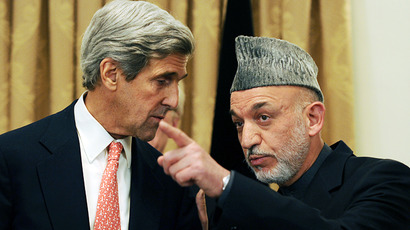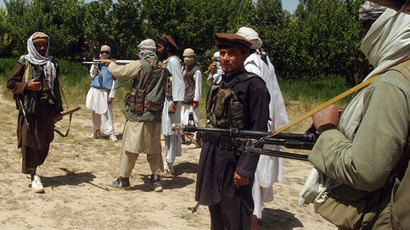Operation Junkyard: US scrapping 'tons' of equipment as Afghan exit looms
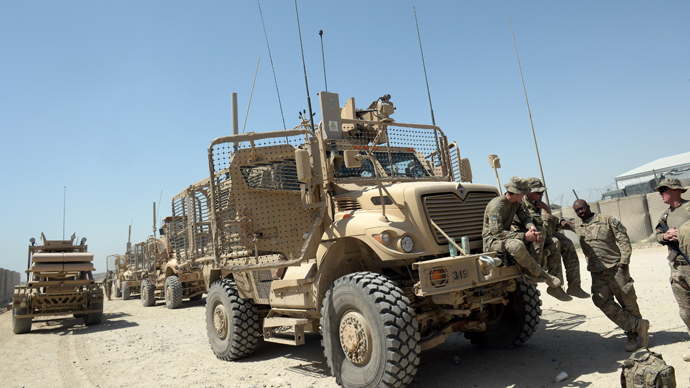
As the US military prepares to complete its withdrawal from Afghanistan next year, it is deliberately destroying billions of dollars worth of sophisticated equipment, according to The Washington Post.
The US military is confronted with the logistical problem of what
to do with millions of pounds worth of vehicles and other
military equipment presently parked in Afghanistan, where the
United States is winding down a nearly 12-year military
operation.
Instead of donating the equipment to the fledgling Afghan
security forces, who are expected to keep the peace following the
US pullout, or perhaps selling the equipment to some third-party
nation, the US will engage in a “massive disposal effort,
which US military officials call unprecedented,” the
Washington Post reported.
In total, the US military will not be shipping home “more than
$7 billion worth of equipment — about 20 percent of what the US
military has in Afghanistan — because it is no longer needed or
would be too costly to ship back home,” the report continued.
The US military has already destroyed more than 77,000 metric tons of military equipment, it added.
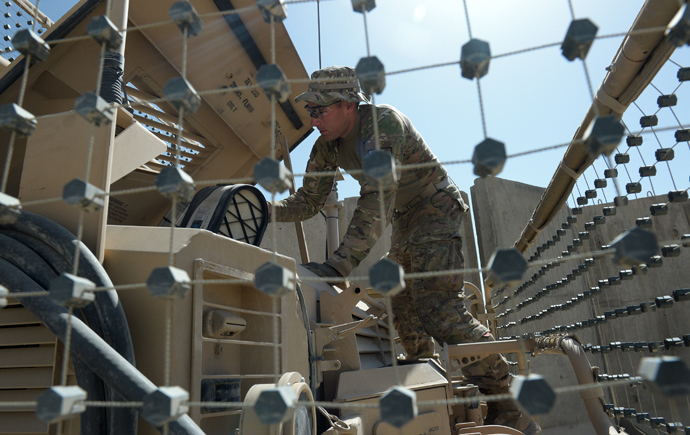
According to the Post, donating all that military equipment to
the Afghan contingency “would be challenging because of
complicated rules governing equipment donations to other
countries.” At the same time, there is concern that
Afghanistan’s fledgling forces would end up shooting itself in
the proverbial foot with all that lethal hardware lying around.
This begs the question: What is the purpose of US military
advisers hanging around in Afghanistan after next year’s
withdrawal if not to give advice on such crucial matters?
As for selling the equipment to “allied nations,” that
possibility was also brushed aside because “few are likely to
be able to retrieve it from the war zone.” But if
Afghanistan is still considered to be a "war zone" why are US
forces in such a hurry to exit?
That leaves the US military, Uncle Sam’s prodigal son, with just
one option, which is a bit hard to fathom in the post-crisis age
of belt-tightening austerity measures: Call in the Afghan scrap
dealers to cut up and haul away the equipment that will
eventually be sold for “pennies per pound on the Afghan scrap
market.”
The Post article floats the argument that the scrapping of
military hardware “reflects a presumptive end to an era of
protracted ground wars.” However, it could also mark the
start of another round of expensive weapon procurements courtesy
of the ‘military-industrial complex’ that at least one former US
leader has warned on.
After all, when the final tally is made as to how much military equipment the US military ‘lost’ in the 12-year war in Afghanistan, it will certainly not hurt the bottom line of defense industry contractors if the loss is considered significant.
However, as the article admits, the scrapping of “tons of equipment is all but certain to raise sharp questions in Afghanistan and the United States about whether the Pentagon’s approach is fiscally responsible and whether it should find ways to leave a greater share to the Afghans.”
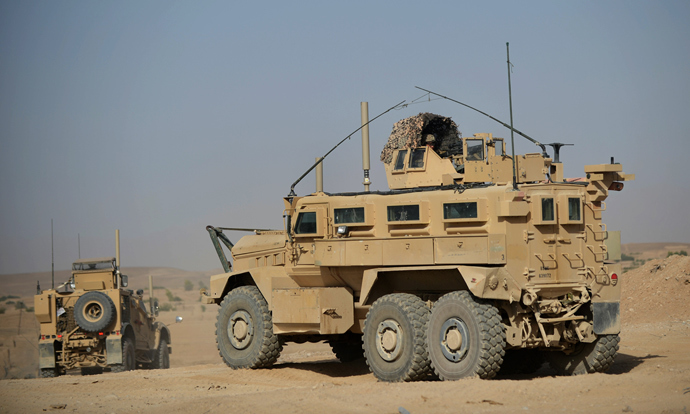
Pricey MRAPs to be junked
Much of the military scrapping process involves the Mine-Resistant Ambush Protected (MRAP) vehicles, which the Pentagon mass-produced in 2007 to counter the threat of roadside improvised explosive devices (IEDs) in Afghanistan.
In May 2007, then Secretary of Defense Robert Gates called the acquisition of MRAPs the Department of Defense's highest priority. In total, more than 24,000 MRAPs were built for troops in Iraq and Afghanistan, ultimately costing taxpayers an estimated $ 45 billion dollars, according to Pentagon figures.
In Afghanistan, the military has categorized around 2,000 of some 11,000 MRAPs “excess,” the Post reported. Of these, about 9,000 will be shipped to the United States and US “military bases in Kuwait and elsewhere.”
The majority of the unwanted vehicles, which cost taxpayers about $1 million each, will be sold to Afghan scrap dealers.
“MRAPs have served us well in the current war, but we will not need all that we bought for Iraq and Afghanistan in the future,” Alan Estevez, the assistant secretary of defense for logistics and materiel readiness, said in a statement. “It is cost prohibitive to retrograde and reset MRAPs that we do not need for the future.”
The MRAPs that the Pentagon has decided to scrap have been arriving “by the dozen” at junkyards at four US bases in Afghanistan in recent months.
Although the move to send millions of dollars’ worth of MRAPs to
the junkyard could be interpreted as the “end of protracted
ground wars,” it could signal the dawn of drone warfare,
which has increased exponentially since the early days of the war
in Afghanistan.
Robert Bridge is the author of the book, Midnight in
the American Empire, which discusses the dangerous
consequences of extreme corporate power in the United States.













